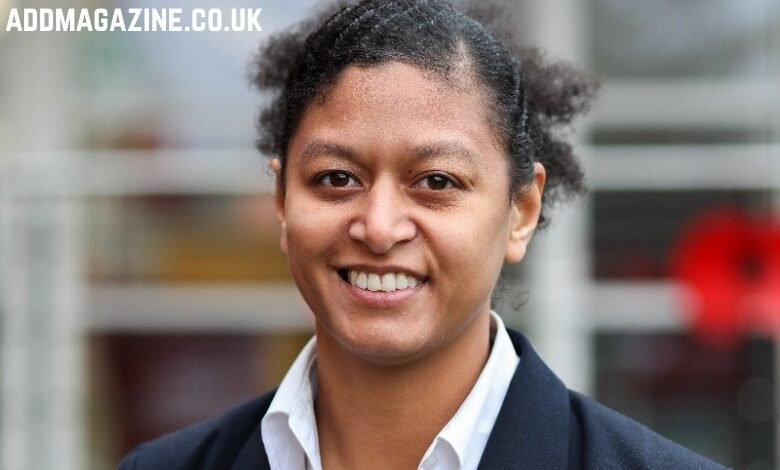Alvina Taylor serves as the Head of Geography at Royal Russell School in the United Kingdom. Her professional journey spans more than a decade in educational leadership, with hands-on experience in curriculum development, mentoring, and academic strategy. With a solid foundation in geography from the University of Brighton and a proven track record across two major secondary schools in London, she brings both depth of subject knowledge and clarity in leadership to the educational landscape.
Early Academic Foundation
Taylor’s academic pursuit in geography began at Royal Russell School, where she completed her A-levels in Geography, Biology and Physical Education, alongside ten GCSEs. During this time, she built the foundation not only in subject knowledge but also in personal responsibility and challenge-management. Her participation in multiple fields, especially balancing physical education with analytical subjects like geography and biology, suggests an early development of a balanced and disciplined mindset.
She went on to study geography at the University of Brighton, earning a Bachelor of Science with a 2:1 grade. During her undergraduate degree (2007–2010), Taylor took on additional responsibilities as a Student Union Events and Entertainment Officer and played field hockey. These roles reveal early leadership and organizational skills, as well as an ability to collaborate and connect with peers in administration and extracurricular contexts.
After completing her BSc, she continued at Brighton to earn a Postgraduate Certificate in Education (PGCE) in Geography (2013–2014). This certification equipped her with the educational pedagogy required to teach effectively, alongside subject mastery.
Initial Career and Early Leadership
Immediately after gaining her PGCE in 2014, Taylor secured a role at Woodcote High School in London as Head of the Geography Department. Over six years, she guided the department, shaping curriculum, enhancing teaching standards, and fostering academic outcomes for students across Key Stages 3, 4, and 5.
In that role, her responsibilities included:
- Curriculum design: Taylor oversaw long-, medium-, and short-term planning. She structured syllabi for Year 7 through Year 13, ensuring progression from general geographic foundations to advanced, exam-ready work in later years.
- Exam preparation: In Key Stages 4 and 5, her focus extended to exam strategy, aligning coursework and teaching to meet GCSE and A-level expectations. Her aim was not only to ensure factual knowledge but also to guide students in analytical thinking, spatial reasoning, and written clarity.
- Department development: She led professional development, mentoring staff and fostering a departmental culture focused on collaboration, consistency, and ongoing improvement.
Transition to Royal Russell School
In September 2020, Taylor moved into the same position—Head of Geography—at Royal Russell School. This role expanded her remit and presented new challenges. As a full-time member of the school, based in London, she took on responsibility for shaping geographic education in a setting she previously knew as a pupil.
Here, her role involves:
- Strategic leadership: Taylor develops the academic strategy for geography. That includes creating a coherent pathway for students to build geographic literacy, from foundational concepts at Key Stage 3 to subject-specific, exam-oriented approaches at Key Stages 4 and 5.
- Department oversight: She leads the entire department’s teaching and administrative operations—working with geography teachers, coordinating schedules, reviewing lesson plans, and aligning with school-wide educational standards.
- Mentor and communicator: Effective communication is essential in her leadership. She mentors both early-career and experienced teachers, offering feedback on instruction, facilitating peer observations, and encouraging reflective practice.
- Problem-solving and adaptation: In education, demands evolve—new syllabi, changing cohort abilities, shifting exam expectations, emerging educational policy. Taylor’s strength lies in collaborative problem-solving: consulting with colleagues, adapting resources, and implementing solutions focused on maintaining high educational standards.
Professional Strengths
Taylor’s profile includes a range of professional strengths that support her role:
- Communication: Clear articulation of learning goals, expectations, and feedback is essential. She communicates across multiple levels—students, colleagues, school leadership—ensuring alignment and clarity.
- Mentoring: Guiding junior teachers through lesson planning, marking strategies, and classroom management forms part of her leadership. She cultivates a culture where teachers learn from each other.
- Management: Her department’s performance reflects her organizational oversight—from curriculum alignment to resource allocation to tracking pupil progress.
- Leadership: She sets the tone for geographic studies, steering departmental priorities in line with educational standards and school values.
- Collaborative problem-solving: Geography often raises real-world, interdisciplinary issues. Within her team, she fosters shared solutions to challenges—be they student engagement, resource gaps, or exam board changes.
Professional Development and Certifications
Beyond her degrees, Taylor holds a certification in Preventing Bullying, issued by Tes in October 2022. This demonstrates her commitment to pastoral care and safeguarding culture within the school environment. Addressing bullying goes beyond academic performance; it safeguards student wellbeing and supports an inclusive environment—both prerequisites for effective teaching and learning.
Thematic Focus and Approach
Looking at Taylor’s career and skill set, several themes emerge—teaching grounded in purpose, leadership rooted in clarity, student-centered curriculum, and professional culture of collaboration.
- Purpose-driven teaching: For Taylor, geography is not abstract knowledge; it provides a lens for students to understand environmental dynamics, human systems, and global-local relationships. Her approach emphasizes depth over breadth, encouraging students to connect themes like sustainability, urbanization, and geopolitics to their own experiences.
- Leadership by example: Taylor exemplifies professional standards—structured lesson planning, timely feedback, reflective pedagogy. Her leadership style shows that being department head is not a hierarchical position but a facilitator of quality practice.
- Student-centered curriculum: By structuring learning pathways across key stages, she ensures that foundational geographic literacy builds toward critical thinking, application, and exam readiness—without losing sight of the wider value of geographic insight.
- Collaborative culture: Recognizing that geography interacts with subjects like biology, physical education, and citizenship, Taylor encourages interdisciplinary teaching and resource sharing. She invites input from science and humanities colleagues, especially for topics like climate change, ecosystems, or population studies.
- Wellbeing and safety: Her preventive-bullying certification underpins a broader commitment to student welfare—ensuring that classroom environments are safe, respectful, and conducive to learning. Geography often prompts discussion of sensitive issues; Taylor’s awareness of these dynamics ensures respectful dialogue.
Concrete Contributions
While Taylor’s achievements are implicit in her long service and leadership roles, a few specific areas stand out:
- Curriculum innovation: Over her tenure at both Woodcote High School and Royal Russell School, she likely led updates to course content in response to exam board changes, integrating themes like climate vulnerability, physical geography mapping, and human geography case studies tailored to both local and global contexts.
- Exam outcomes: Long-term leadership typically reflects in exam performance. While figures are not publicly provided, a coherent strategy across key stages usually correlates with above-average results and positive student progression to higher education in geography and related fields.
- Department resilience: A stable, forward-looking department under her leadership would have weathered challenges like staff turnover, curriculum reform, or even COVID-19 disruptions. Her leadership since 2020 at Royal Russell, through a pandemic era, implies adaptability and steady departmental performance.
Context of Role
Geography is often overshadowed by STEM or language disciplines, yet it remains a key subject for developing environmental awareness, spatial reasoning, and civic understanding. At a time when climate-related crises and global interdependence shape public discourse, geography teaching has renewed relevance.
Taylor’s role as Head of Geography positions her as a mediator between traditional curricular demands and contemporary educational needs. She manages the practicalities of exam preparation while ensuring that the subject remains vibrant, connected, and purposeful for students.
Her presence in two reputable London schools underscores her capacity not simply to teach geography but to embed it meaningfully in school-wide academic vision. At Royal Russell School, her return as Head of Department combines institutional understanding—from having studied there—with external experience gained at Woodcote. That blend gives her both institutional credibility and fresh perspective.
Broader Professional Profile
Taylor’s career illustrates key traits of a modern educational leader:
- Subject expertise: Grounded in solid geography credentials from a respected university.
- Educational skill: PGCE training prepares her to transfer knowledge effectively to learners across age groups.
- Leadership experience: Six years leading one department, then moving to lead another, shows recognized competence.
- Professional integrity: Certifications, continuous responsibility, and mentoring roles suggest ethical, sustained practice.
- Adaptability: Thriving through shifting educational landscapes—syllabus revision, exam board changes, pandemic challenges—signals resilience and readiness to evolve.
Conclusion
Alvina Taylor exemplifies purposeful and pragmatic educational leadership within geography—a subject that shapes how students perceive place, environment, and the world at large. Her career path reveals clarity of aim, consistency in professional growth, and steadfast commitment to student learning.
From her academic roots in Brighton to her early leadership role at Woodcote High School, and now to her present role at Royal Russell School, Taylor has consistently applied subject knowledge, pedagogy, and strategic thinking to elevate geography teaching. Her departmental oversight, mentoring of colleagues, communication across stakeholders, and curriculum stewardship have strengthened academic offerings and supported students in achieving both intellectual and examination goals.
In an age when geographic literacy matters more than ever—given environmental concerns, global connectivity, and spatial inequality—professionals like Taylor play an essential but understated role. Her work demonstrates how leadership in geography education can be clear, effective, and grounded in students’ needs.




